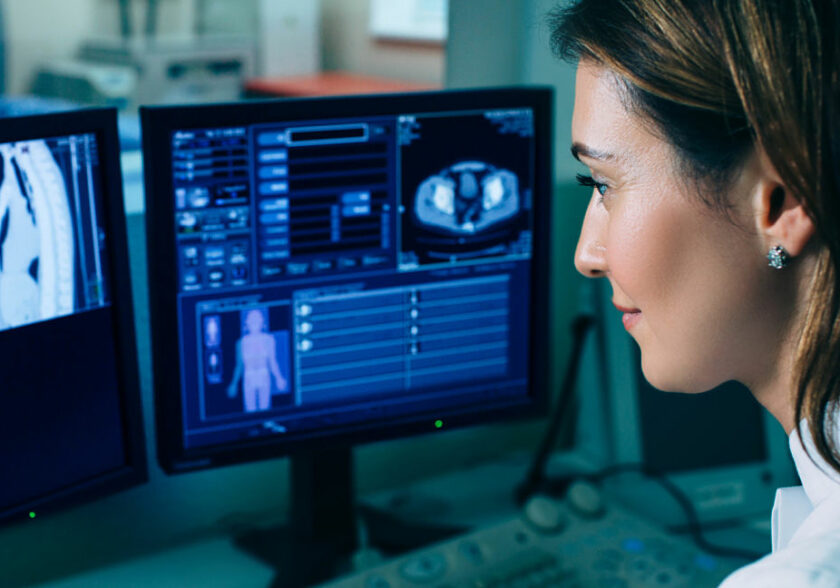What is hospital radiophysics?
Hospital radiophysics is concerned with measuring and assessing radiation, ensuring that the physics of radiation are correctly planned, implemented and researched in the field of medicine.
Its scope of action within medicine involves the implementation of ionising radiation, both for diagnosis (radiology and nuclear medicine) and in radiation therapy. The field also plays a prominent role in diagnostic tests, such as MRI scans and ultrasounds.
Which patients is it for?
Hospital radiophysics specialists handle dosimetry for radiotherapy patients, dosimetry and quality control for treatment units and radiotherapy sources, quality control in imaging diagnostics (radiodiagnostics and nuclear medicine), controlling dosage for patients undergoing diagnostic tests with ionising radiation and radiological protection in general within the hospital.
Main conditions and diseases
Radiophysicists’ work is closely linked to the treatment of cancer patients. Calculating treatment times, designing treatment techniques and determining the distribution of energy imparted inside the patient all fall under their responsibility. Because of this, they play a prominent role in ensuring the quality and success of treatment.
Main diagnostic resources and technology
- Linear electron and photon accelerator, with image guidance system plus multileaf collimator that adapts the dose to the size of the tumour.
- Proton accelerator.
- Automatic brachytherapy systems, in which a radioactive source is guided to impart the dose within the tumour itself.
- Diagnostic systems: X-rays, CT scanner, magnetic resonance, ultrasound.
- Computerised systems for calculating doses in patients undergoing radiation therapy.
- Radiation detectors.
Main treatments
- Interstitial HDR (high-dose rate) brachytherapy (also known as curietherapy) with iridium-192
- LDR (low-dose rate) brachytherapy Permanent iodine-125 prostate implants
- 3D conformal radiation therapy
- Intensity-modulated radiation therapy (IMRT)
- Volumetric-modulated arc therapy (VMAT)
- Stereotactic radio surgery (SRS)
- Stereotactic Body Radiation Therapy (SBRT)
- Image-guided radiation therapy (IGRT)
Areas of specialisation
- Radiation protection
- Diagnostic equipment quality control
- Brachytherapy
- Teletherapy with accelerators
FAQs
Is radiation dangerous?
No. All radiotherapy departments are regulated by strict regulations, including legal proclamations (Royal Decree 1528/1999) and international protocols, such as the International Atomic Energy Agency.
The purpose of radiation therapy is to control tumours through the irradiation of cancer cells with high doses of radiation, preserving healthy organs as much as possible, in the same way a surgeon would. Technological advances in the last twenty years have turned radiation therapy into a sophisticated, precise technique with minimal side effects. All this is thanks to the work of radiophysicists, who work on a continuous process of physical dosimetry, clinical planning and exhaustive quality control.



